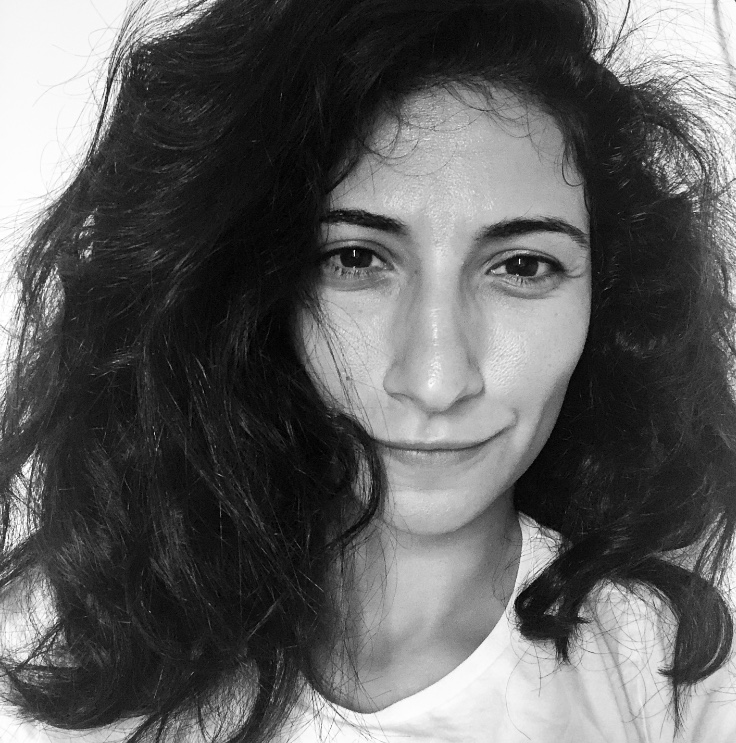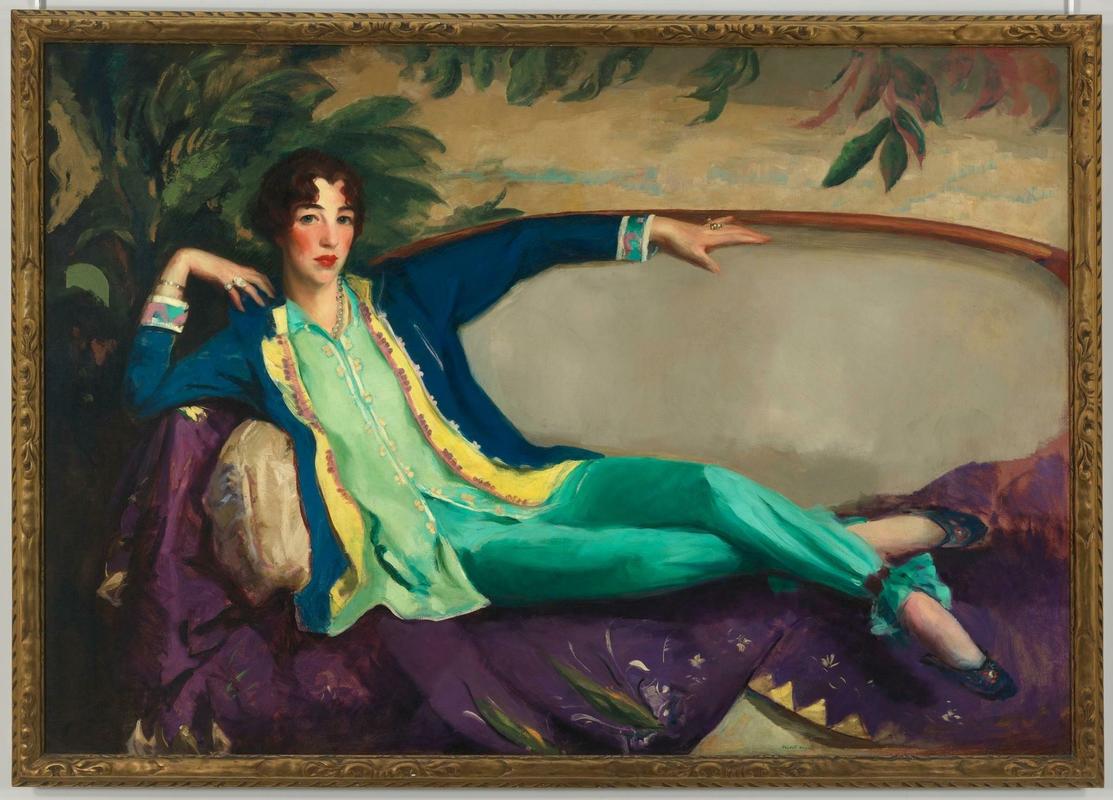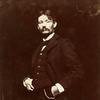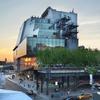More about Gertrude Vanderbilt Whitney

Contributor
Despite being a rich girl, Gertrude Whitney had the heart of a rebel artist, which Robert Henri captures in this portrait.
Whitney was born into wealth and class; her father was railroad magnate Cornelius Vanderbilt II, and her great-grandfather was Cornelius Vanderbilt. She studied sculpture in Paris before going boho-chic in New York City. While art society (namely art buyers) snubbed works by living American artists, Whitney flew in like a modern hero and snapped up pieces by Edward Hopper, Georgia O’Keeffe, and George Bellows. By 1929, her collection grew to an estimated 600 artworks. She offered these works to the Met, who rejected them. This is when the Whitney Museum was born.
In Henri’s portrait, Gertrude Vanderbilt Whitney, the woman who defied the establishment art world lounges on a chaise, clad in silken pantaloons. Wearing pants was a rebellious act in itself as it was rare to see a woman of her class and status wearing what was then considered to be masculine attire. After commissioning this portrait, her husband Harry refused to hang it in their shared home, objecting to her pants. Henri's portrait turns the trope of the recumbent woman on its head; instead of a Venus figure or nude model, Whitney appears as a confident and thoroughly modern independent woman.
Whitney had married Harry Payne, a professional polo player when she was 21 years old. Gertrude had never been short of cash, and gained even more when Harry died in 1930, leaving his tobacco and oil fortune of $72 million to his widower. Still, society at large was shocked by Gertrude’s move towards art, with a New York Times headline reading: "Daughter of Cornelius Vanderbilt Will Live in Dingy New York Alley.”
While she had the funds, she was sympathetic to the starving artist, going so far as to fund The Arts Magazine from shutting down in 1922. Gertrude hadn’t intended on opening up a museum. She was no Peggy Guggenheim. The Whitney Studio Club, where she originally showcased her collection, acted more like a hangout space for artists to converse and share ideas. For someone who “longed to be someone else” she certainly surrounded herself with like-minded individuals. As a sculptor herself, her art wasn’t encouraged by friends and family, or her late husband.
Apart from snubbing their nose at Gertrude’s career, there were other heartaches in the family life. Both Gertrude and Harry dabbled in extramarital affairs. Gertrude even gained custody of NBC journalist Anderson Cooper’s ma’, Gloria Vanderbilt. The custody battle had all the makings of an HBO drama, which saw Gertrude battling it out with Gloria’s mother. Sadly enough, once the bright lights and cameras left, it was reported that Gertrude largely ignored her niece.
Gertrude’s studio in Old Westbury, the estate in Long Island, acted as a space for the artist to sculpt. To add a touch of exoticness to what would be an ordinary artist’s studio, Gertrude had brilliantly colored birds flying loose. As a member of the Founders of the Daughters of the American Revolution, she designed their marble sculpture in 1929. She received commissions from throughout the country, which she gladly took on because, despite all her wealth, Gertrude “[pitied] above all that class of people who have no necessity to work. They have fallen from the world of action and feeling into a state of immobility and unrest . . . the dregs of humanity.”
Gertrude eventually left the Whitney Museum to her daughter Flora Whitney Miller when she passed away from illness in 1942.
Sources
- Alberro, Alexander, “America is easier to see, but the whole picture remains elusive: Alexander Alberro on the Whitney’s opening exhibition,” The Art Newspaper, April 29, 2015. Accessed May 19, 2021. https://www.theartnewspaper.com/news/america-is-easier-to-see-but-the-w…
- Backer, Emma, “Gertrude Vanderbilt Whitney: Advocate for the American Artist,” Culture Trip, November 29, 2016. Accessed May 19, 2021. https://theculturetrip.com/north-america/usa/new-york/articles/gertrude…
- Alexander Castro, “Arts Review: Gertrude Vanderbilt Whitney as passionate storyteller,” Newport Daily News, April 25, 2019. Accessed May 19, 2021. https://www.newportri.com/news/20190425/arts-review-gertrude-vanderbilt…
- Dodie Kazanjian, “Getrude Vandebilt Whitney’s heirs are back at the family’s spanking-new museum,”Vogue, June 9, 2015. Accessed May 20, 2021. https://www.vogue.com/article/new-whitney-museum-gertrude-vanderbilt-wh…
- Schwiegershausen, Erica, “The Iconoclastic woman who founded the Whitney,” The Cut, May 1, 2015. Accessed May 19, 2021. https://www.thecut.com/2015/05/iconoclastic-woman-who-founded-the-whitn…
- Stephens, Lannyl, “The Ashcan School and the Beginnings of the Whitney,” Village Preservation, July 31, 2017. Accessed May 19, 2021. https://www.villagepreservation.org/2017/07/31/the-ashcan-school-and-th…
- Whitney, Christine, “An artful life: Gertrude Vanderbilt Whitney,” Harpers Bazaar, July 17, 2015. Accessed May 20, 2021. https://www.harpersbazaar.com/fashion/photography/a11483/gertrude-vande…











